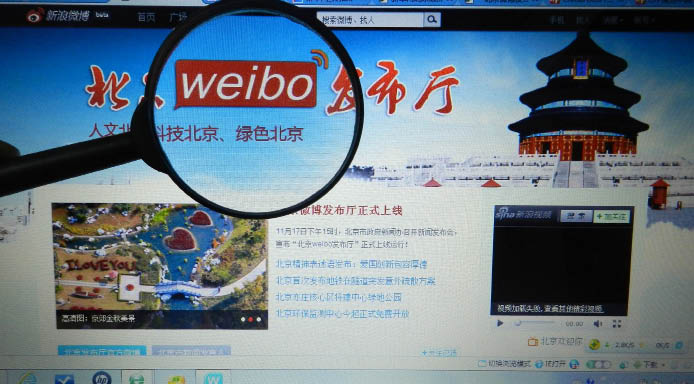By XUE SONGYAN
By XUE SONGYAN
REFORM of administrative structures and innovation in social management have been integral to China’s reform and opening-up. At their core has been a transformation of the government’s role from administrative bureaucracy to service provider.
 |
|
When on November 17, 2011, the Beijing Weibo Press Release Hall went online on sina.com.cn, a total of 20 Beijing municipal administrative departments joined in. CFP |
The Internet, as a relatively new form of media readily accessible to the public, has given impetus to this transformation process. Especially in governmental realms, websites have encouraged openness and transparency. With the click of a mouse, people can read all about budgets, leave comments and opinions, and participate in the formulation of policy. This has boosted confidence in government itself.
Last February, a Chinese student was detained in Manila Airport in the Philippines. A Chinese man at the scene sent out the news on Weibo – a twitter-like microblogging service. Four hours later, “Diplomatic Smarts,” the official Weibo account of the Ministry of Foreign Affairs of the PRC, made its first response: “Upon reading about the detainment on Weibo, Diplomatic Smarts immediately contacted the Chinese embassy in the Philippines, which sent a consular official to the airport. It turned out that the student was denied entrance to the country because of incomplete arrival documentation. The consular official is helping secure his entry.”
Ten minutes later “Diplomatic Smarts” sent out another piece of information – the mobile phone number of the responsible consular official. Travelers were advised to call the number in case of emergencies in the Philippines. Other telephone numbers of Chinese institutions in the country were also given. The posting of this information was lauded by netizens as a great example of prompt government response. Microblogs like Weibo in particular have become indispensable in helping the public exercise their rights to supervise, learn about and participate in the administration of public affairs.
In March 2010, the State Council announced that government expenditures on receptions, transportation and overseas travel would be detailed for the first time in the June central financial report to the Standing Committee of the National People’s Congress – a document available for anyone to read. By August 2010 almost all 98 departments and ministries of the central government had laid bare their expenditures to the public, the exceptions being those working with state secrets. This release of expenditure data drew considerable public attention and sparked heated debate.
Since the central government launched its government website project in 1999, the web presence of ministries and commissions of the State Council and local governments has rapidly developed. Originally focused on gaining an online presence, by 2010 government websites had set about reinventing themselves as interactive portals through which information and services are shared freely. The goal is the same as always – openness and transparency, but the platform is greatly improved.